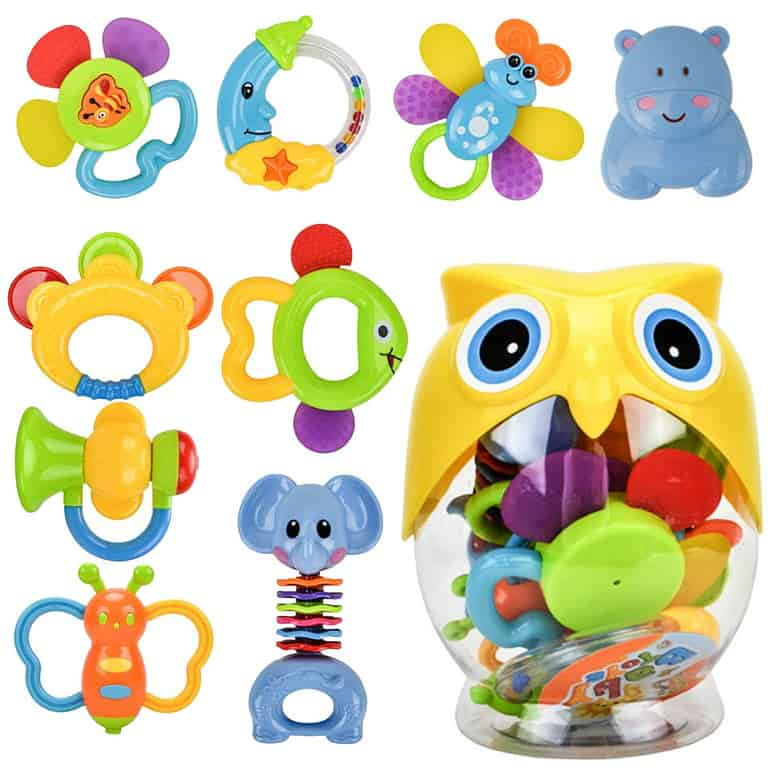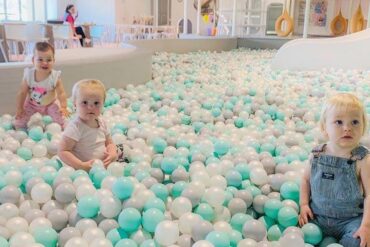Sensory Toys for Newborns: A Parent’s Guide to Early Development Stimulation
Hello there, wonderful parents! Are you looking to give your newborn the best start in life with sensory toys that stimulate and delight? Well, you’ve come to the right place! We’re going to dive into the colorful and engaging world of sensory toys and how they can greatly benefit your little one’s development. Get ready to be equipped with all the knowledge and tips you need to pick the perfect sensory toy for your newborn!
Understanding the Importance of Sensory Play
Sensory play is not just fun and games; it’s a critical part of your newborn’s growth. Babies learn about their world through their senses, and each new texture, sound, and color they encounter helps build neural pathways in their brain. In the early months, this is how babies start to understand their environment and develop their physical and cognitive abilities.
What Are Sensory Toys?
So, what exactly are sensory toys? In a nutshell, sensory toys are designed to stimulate one or more of your baby’s senses: touch, sight, sound, smell, and taste. They come in various shapes, sizes, and levels of complexity, but all serve the same purpose—to aid in your child’s sensory development. Sensory toys can include soft toys with various textures, colorful mobiles, sound-producing rattles, and more.
Choosing the Right Sensory Toy for Your Newborn
When selecting sensory toys for your newborn, safety is paramount. The toys should be age-appropriate, made from non-toxic materials, and free of small parts to prevent any choking hazards. Look for toys that are specifically designed for newborns and carry certification for safety standards. Additionally, consider the five sensory categories when choosing toys to offer a balanced sensory experience for your baby.
Sensory Toys by Category
- Visual: Newborns are fascinated with high-contrast patterns and their developing vision will benefit from toys that provide bold shapes and colors.
- Auditory: Toys that make gentle sounds like soft bells or chimes can help stimulate your baby’s hearing and cognitive development.
- Tactile: Toys with a variety of textures can enhance tactile exploration and fine motor skills.
- Olfactory: While strong scents are not recommended for newborns, natural, mild scents can be soothing and can form part of their sensory experiences.
- Gustatory: It’s a bit early for taste-based play, but teething toys are on the horizon and can introduce new textures and relief for sore gums.
Favorites in the Sensory Toy Box
Ready to see some top picks? Here are a few favorites that are both safe and entertaining for newborns:
- Black and White Mobiles: Perfect for visual stimulation, these create wonderful focus points above your baby’s crib.
- Soft Rattles: The gentle sound of a soft rattle can mesmerize infants, giving them an introduction to cause and effect.
- Touch-and-Feel Books: It’s never too early for a good book, especially one with various textures to explore.
- Musical Toys: Soft music can provide auditory stimulation, and there are many safe options designed for newborns.
Sensory toys for newborns serve as fun, early building blocks for your child’s growth, and investing in the right types of toys can have lasting positive effects. Let’s ensure your baby’s toy box is filled with engaging and enriching items that will help them explore the world in the best possible way!
Now let’s dive deeper and explore some specific sensory toys that are sure to kick-start your baby’s sensory journey, as well as some tips for integrating sensory play into your daily routine for a happy, healthy development. Keep reading to light up your little one’s world with sensory play!

5 Essential Tips for Parents Preparing for Sensory Play with Newborns
As new parents, preparing for sensory play with your newborn can be exciting! Here are five essential tips to help you create a safe and stimulating sensory play environment:
1. Start with a Safe Space
Before introducing sensory toys to your newborn, it’s important to create a safe and comfortable area. This could be a clean playmat on the floor, a well-secured crib, or a baby gym. Make sure the space is away from potential hazards and has a flat surface for your baby to lie on.
2. Introduce Sensory Toys Gradually
Newborns can become overstimulated easily, so it’s best to introduce sensory toys one at a time. Pay attention to your baby’s cues and reactions to each new sensory experience. If they seem fussy or overwhelmed, give them a break and try again later.
3. Engage Through Interaction
Sensory play isn’t just about the toys; it’s also about the interaction between you and your baby. Talk to your baby about the toys they’re exploring. Describe the colors, textures, and sounds to help them make connections between words and senses.
4. Keep It Clean
Babies explore with their mouths, so it’s essential to keep sensory toys clean. Wash fabric toys regularly and wipe down plastic or silicone toys with a safe disinfectant to prevent the spread of germs. Always follow the manufacturer’s instructions for cleaning and maintenance.
5. Monitor and Rotate Toys
To maintain your newborn’s interest and encourage ongoing development, monitor which toys they seem to enjoy and rotate them occasionally. This will provide varied stimulation and prevent boredom. However, if a toy appears to be a favorite, there’s no harm in making it a staple in your sensory playtime.
Integrating Sensory Play into Your Daily Routine
Incorporating sensory play into your newborn’s daily routine is easier than you may think! Here’s how:
Morning Playtime
After breakfast, spend some time with bright and colorful toys that stimulate vision. High contrast mobiles or mats work wonders here.
Afternoon Tummy Time
Dedicate a portion of your afternoon to tummy time with tactile toys. Mats with different textures and fabric books encourage your baby to lift their head and strengthen their neck muscles.
Evening Wind-down
Choose soothing, soft-sounding toys to create a calm atmosphere in the evening. Gentle chimes or quiet musical toys can help signal that it’s time to start winding down for bedtime.
Remember, sensory play is about exploration and learning at your baby’s own pace. All newborns are different, so what delights one may not interest another. Stay patient, observant, and responsive to your little one’s needs, and you’ll soon discover what sensory activities they love the most. Happy sensory playtime!
See more great Things to Do with Kids in New Zealand here. For more information see here
Disclaimer
The articles available via our website provide general information only and we strongly urge readers to exercise caution and conduct their own thorough research and fact-checking. The information presented should not be taken as absolute truth, and, to the maximum extent permitted by law, we will not be held liable for any inaccuracies or errors in the content. It is essential for individuals to independently verify and validate the information before making any decisions or taking any actions based on the articles.




